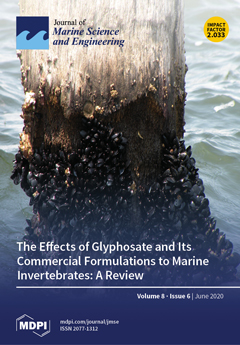Open AccessFeature PaperArticle
MaRINET2 Tidal Energy Round Robin Tests—Performance Comparison of a Horizontal Axis Turbine Subjected to Combined Wave and Current Conditions
by
Benoît Gaurier, Stephanie Ordonez-Sanchez, Jean-Valéry Facq, Grégory Germain, Cameron Johnstone, Rodrigo Martinez, Francesco Salvatore, Ivan Santic, Thomas Davey, Chris Old and Brian Sellar
Cited by 31 | Viewed by 3234
Abstract
This Round Robin Test program aims to establish the influence of the combined wave and current effect on the power capture and performance of a generic tidal turbine prototype. Three facilities offering similar range of experimental conditions have been selected on the basis
[...] Read more.
This Round Robin Test program aims to establish the influence of the combined wave and current effect on the power capture and performance of a generic tidal turbine prototype. Three facilities offering similar range of experimental conditions have been selected on the basis that their dimensions along with the rotor diameter of the turbine translate into low blockage ratio conditions. The performance of the turbine shows differences between the facilities up to 25% in terms of average power coefficient, depending on the wave and current cases. To prevent the flow velocity increasing these differences, the turbine performance coefficients have been systematically normalized using a time-average disc-integrated velocity, accounting for vertical gradients over the turbine swept area. Differences linked to blockage effects and turbulence characteristics between facilities are both responsible for 5 to 10% of the power coefficient gaps. The intrinsic differences between the tanks play a significant role as well. A first attempt is given to show how the wave-current interaction effects can be responsible for differences in the turbine performance. In these tanks, the simultaneous generation of wave and current is a key part often producing disruptions in both of these flow characteristics.
Full article
►▼
Show Figures





